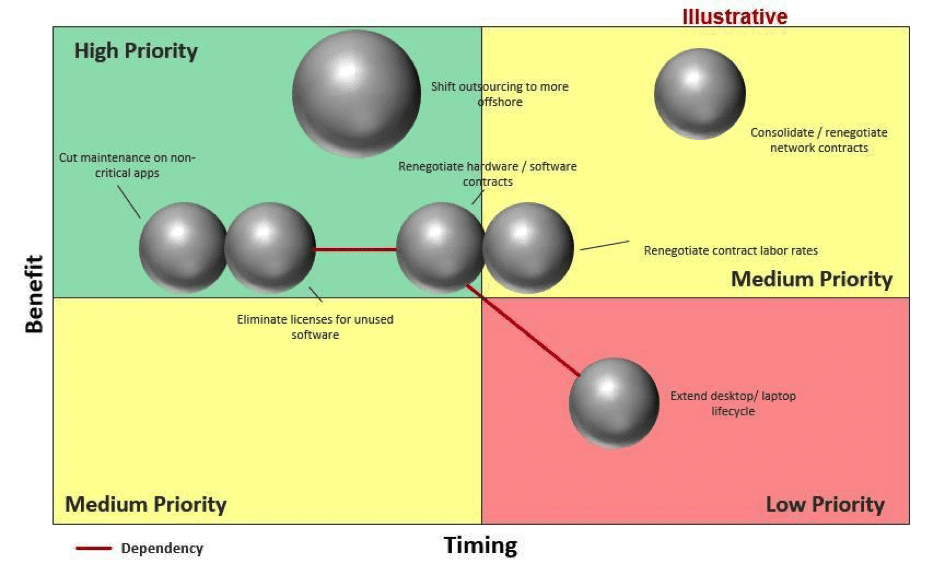This article is part three of a four-part series on optimizing IT costs.
As revenue decline continues to place scrutiny on all technology costs, a programmatic model to review technology spend and impact across all budgets, internal and external to IT, can identify quick-wins and long-term cost efficiency opportunities. Not only can a cost optimization program help evaluate the tradeoffs of various opportunities, it will often provide improved cost control as a long-term capability within IT, generating smarter cost and investment management over time.
By breaking down budget silos and reviewing all opportunities against a defined decisioning model, IT can work closely with the business to identify cost reductions far beyond the immediate, mandatory budget reductions. Understanding the tradeoffs between spend, business impact, and long-term capability development can prevent unplanned impact and keep companies ready to rebound more effectively.
Evaluating these trade-offs requires a standardized approach. The framework does not necessarily require undue complexity, but companies must consistently leverage the framework. Tradeoff analysis considers overall benefit to the organization, required levels of investment, timing of value achievement, degree of business impact, level of change impact on the organization, and an assessment of the technical risk. Companies may also include decision elements which are specific and meaningful within their organization.
Timing
Another key consideration in the decision framework is knowledge of the last time a particular opportunity was pursued. When business conditions drive cost efficiency requirements, many IT groups attempt to return to tried and true targets that achieved reductions in the past. These targets may have yielded significant opportunities in the past due to changing market conditions, such as network bandwidth costs, or server hosting; however, once these types of opportunities are achieved, they rarely yield similar levels of impact. All target analysis frameworks should include a date for the last time the target was pursued, and the resulting outcome. While a company may wish to pursue the target again, they will likely fall lower in the priority when compared to new targets.

Figure 4: Tradeoff and Dependencies
Upon gathering the appropriate data and considering the trade-offs within each opportunity, the targets can be prioritized and reviewed for dependencies. Some optimization targets may appear less impactful but are required to enable key capabilities which unlock more significant optimization activities later in the program.
Lawrence Eribarneis a Principal at Enaxis Consulting with over 20 years of experience as a technology leader performing IT organizational transformations as both an industry leader and IT advisor. Lawrence has a cross-industry background covering media, technology, military, and a strong emphasis on energy and manufacturing. Lawrence focuses heavily on IT strategy, portfolio management, cost optimization, operational process improvement, and value realization.
Prior to Enaxis, Lawrence held senior leadership roles within several global companies with responsibilities across strategy, planning, and service delivery. Lawrence also led IT service delivery and advisory engagements within SAIC at several Fortune 100 energy clients. He earned his BS from the University of Houston and MBA from Texas A&M University.






